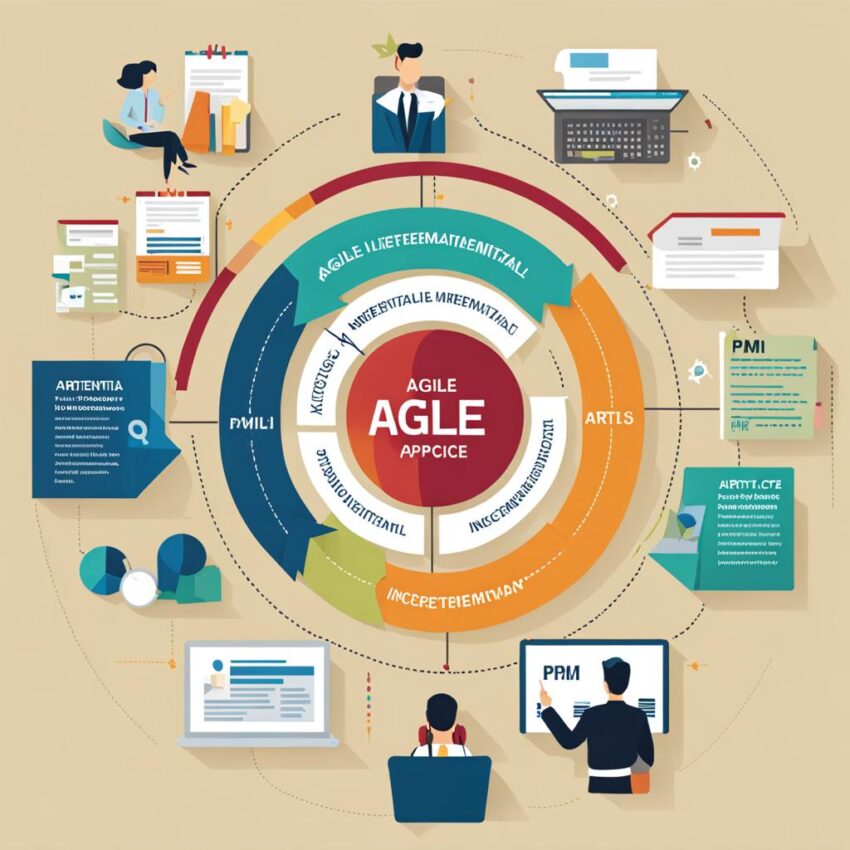By: Hammam Elmahi

Introduction
When the Project management body of knowledge PMBOK guide illustrates the project management development approaches PMD, it is categorised into 5 different methods which are: traditional, iterative, incremental, agile and hybrid.
A deep understanding of the principles of these approaches in essential for the PMP exam, because some of the exam questions can speak about a scenario explaining one of these five approaches and ask you, which one could be the best approach.
This article will give you the fundamentals and the principles that can aid you to understand and differentiate between them, with a simple example.
Project Development Approaches.
The development approaches are also known as the development life cycles, but that is different from the project life cycle, which is the chain of activities and processes that a project goes through from the start to the end or closure, and it consists of starting, preparing, executing and finishing.
A-Predictive life cycle:
The traditional method of managing the projects is also known as; the waterfall life cycle. This approach is adopted when the requirements are clear and determined and the scope of work is stable and well-defined. The change in this approach is not welcome, because it will affect the project constraints and baseline, such as scope, schedule and cost baseline.
The PMBOK in the previous edition was based on this approach, but in the 6th edition, PMI has added some pages about agile in terms of modern ways of conducting projects. The waterfall approaches are usually used in construction projects like buildings and bridges.
B-Iterative life cycle
This approach is used when we expect many changes in the project requirements and the project deliverable is complex, so we prefer frequent feedback for modification and apply suitable improvement, also useful for clarifying requirements and investigating various options.
We use an iterative approach with a project that has many stakeholders with high influence on the objective, and the frequent version of a prototype is one of the main iterative techniques. Not to mention that The general goal of iteration is to reduce the uncertainty.
The weak point about this methodology is time, it is time time-consuming way of managing projects, and a clear example of that is when you create a very basic website and then start refining it.
C- incremental lifecycle
“By the yard it’s hard, but inch by inch, anything’s a cinch’’ it can be the summary of the incremental approach, where we provide a usable deliverable to customers who have gone through the steps of analysis, design, build, test and deliver, these steps known as an incremental life cycle.
The main benefit of this method is to speed up the outcome of the effort and provide a partial deliverable based on customer requirements, but the increment deliverables that contain the value are to be considered as completed only after the final iteration. One example of that is a university curriculum, as you have to complete certain modules with weighted hours in order to get the certificate after 2 or three years in a university, but you will get the degree at the end of the final year.

D- Agile approach
This framework is based on the Agile manifesto, as we follow a mindset here our ultimate goal is customer satisfaction. It provides frequent deliverables like incremental approach but the output this time is approved completed and can be used by the end user. Usually, we use it for software and applications projects where we accept the change at any time in the lifecycle.
Examples of the Agile framework are SCRUM and XP programming, which are famous for the daily stand-up meeting and product backlog.
Conclusion
Another categorisation of the project development life cycle is the predictive which is the traditional, the adaptive approach which includes the incremental, adaptive and agile, and finally we have the hybrid life cycle, which is when we adopt the predictive and one of the adaptive life cycles at the same time. Often, we use the hybrid when we adopt the agile management methodologies, but we want the change to take place gradually.


Remarkable talent!